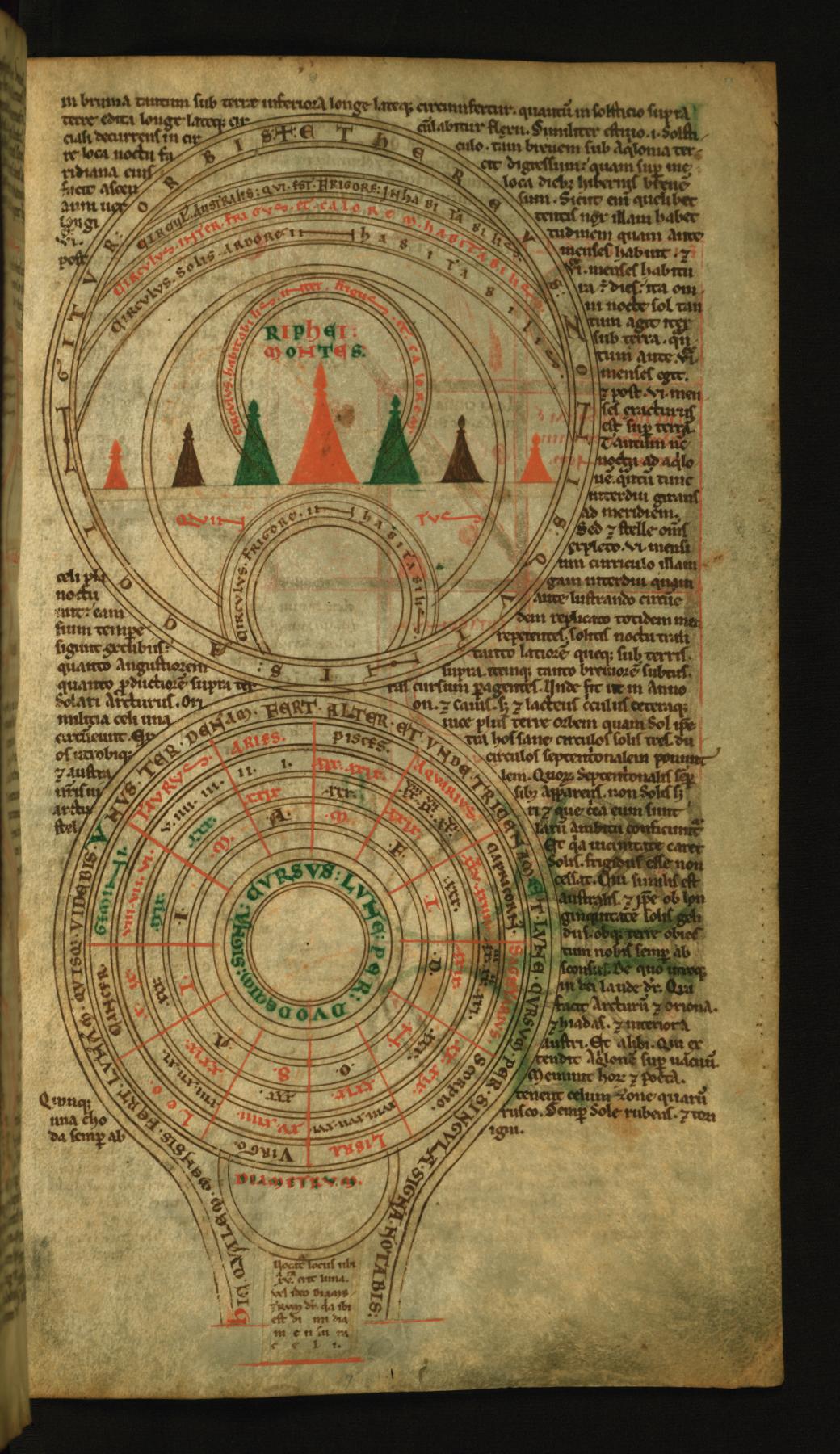Diagrams of the Terrestrial Climate Zones with the Riphaean Mountains and the Circuit of the Moon in the Zodiac
(Manuscripts and Rare Books)
In the diagram in the top half of the page, the observer's point-of-view is the North Pole. This diagram is similar to the one in the lower part of fol. 6v of this same manuscript, except that it also shows the Riphaean Mountains – a mythical range of peaks thought to mark the boundary between Asia and Europe, and the Arctic and North temperate zones -- represented as seven abstract, colored silhouettes resembling triangular game-pieces. The diagram in the bottom half of the page charts the course of the Moon through the zodiac, correlating the lunar or synodic months and the zodiacal signs. According to the De natura rerum (On the nature of things) of the English scholar, Bede (d. 735 CE), the Moon journeys through the zodiac thirteen times in twelve lunar months; thus, it runs through each zodiacal sign in a little over two days and six hours.
Provenance
Provenance (from the French provenir, 'to come from/forth') is the chronology of the ownership, custody, or location of a historical object. Learn more about provenance at the Walters.
Gruel and Englemann Collection, Paris [1]; acquired by Henry Walters, Baltimore, 1903; by bequest to Walters Art Museum, 1931.
[1] no. 131, bookplate on inside upper board
Exhibitions
| 1992 | A World of Foreign Lands. The Walters Art Gallery, Baltimore. |
Geographies
United Kingdom, England (Place of Origin)
Measurements
H: 10 1/2 × W: 6 1/8 in. (26.7 × 15.5 cm)
Credit Line
Acquired by Henry Walters, 1903
Location in Museum
Not on view
Accession Number
In libraries, galleries, museums, and archives, an accession number is a unique identifier assigned to each object in the collection.
In libraries, galleries, museums, and archives, an accession number is a unique identifier assigned to each object in the collection.
W.73.7R



